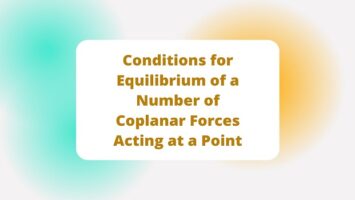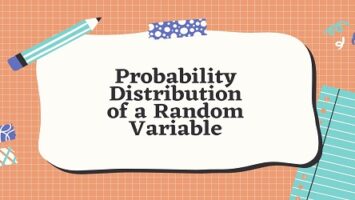Independent Events Probability:
Two or more events are said to be independent if the probability of occurrence of any of them remains unaffected by any supplementary knowledge regarding the occurrence or non-occurrence of any number of remaining events.
If a card is drawn from a well-shuffled pack of 52 cards and then another card is drawn after replacing the previous card and reshuffling the pack, then the outcome of the second draw is independent of the outcome of the first. If two dice are tossed, then the events A defined by getting an even number on the first die and B defined by getting an even number on the second die are independent as the probability of obtaining an even number on the second die does not change even if it is known whether the first die has resulted in an even number or not. Here, the unconditional probability of B is the same as conditional probabilities given A or Ac, i.e., P(B) = P(B/A) = P(B/Ac).
If two events A and B are independent, the probability of occurrence of A, as well as B, is given by the product of their probabilities, i.e., P(AB) = P(A) x P(B), because in this case, P(B/A) = P(B) as P(B/A) is unaffected by the supplementary knowledge regarding the occurrence or non-occurrence of A.
Thus, for two independent events A and B, P(AB) = P(A) x P(B).
The result may be extended to any number of events. If E1, E2, E3,…….., En are n independent events, then-
| P(E1 E2 E3……..En) = P(E1) x P(E2) x P(E3)……P(En) |
| Example- If events A and B are independent, then Ac and Bc are also independent. Proof- If A and B are independent, then P(AB) = P(A) x P(B) ∴ P(A + B) = P(A) + P(B) – P(A ∩ B) ⇒ P(A + B) = P(A) + P(B) – P(AB) ⇒ P(A + B) = P(A) + P(B) – P(A) . P(B) Since the event, Ac Bc is complementary to the event A + B (which is obvious because the non-occurrence of both A and B is complementary to the occurrence of at least one of A and B), we have P(Ac Bc) = 1- P(A + B) ⇒ P(Ac Bc) = 1 – { P(A) + P(B) – P(A) . P(B) } ⇒ P(Ac Bc) = { 1 – P(A) } { 1 – P(B) } ⇒ P(Ac Bc) = P(Ac) . P( Bc) Thus, events Ac and Bc are independent. |









Comments (No)